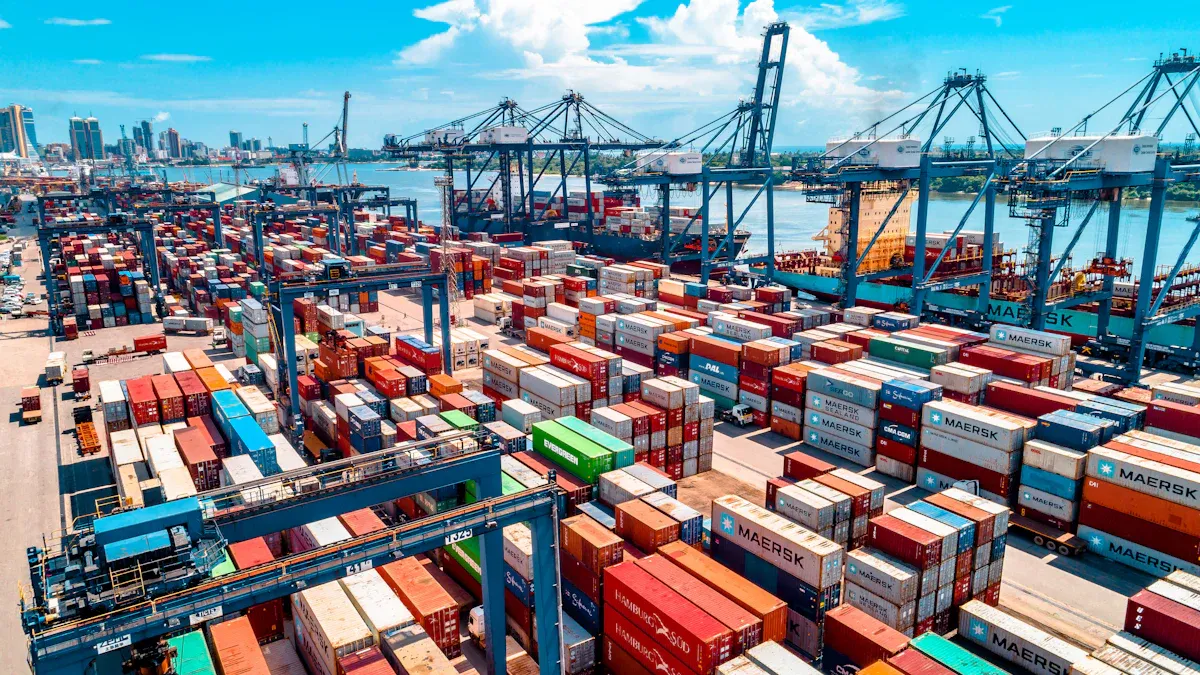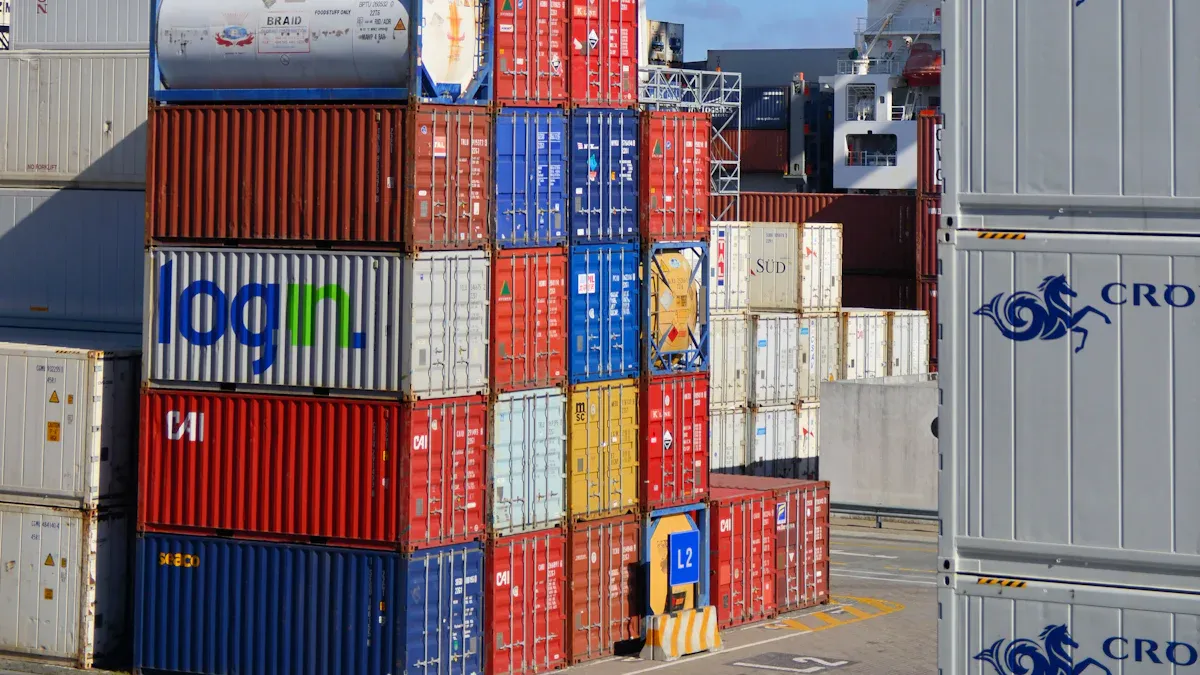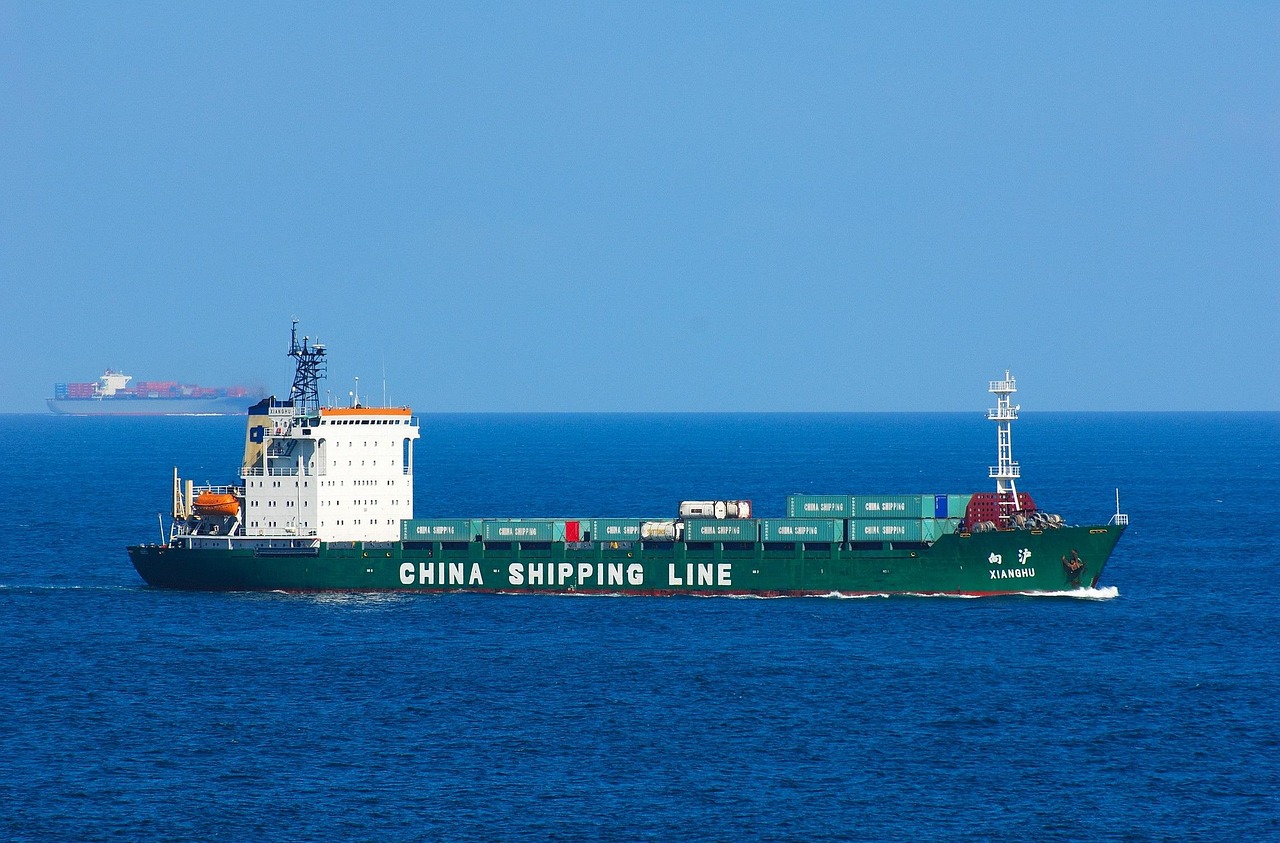Compare Terminal Handling Charges Across Major Ports

Shipping costs often depend on terminal handling charges, which vary significantly across ports. Factors like infrastructure quality, geographic location, and local regulations influence these charges. For example, Shanghai's efficient systems may result in lower fees compared to Rotterdam's complex logistics. Businesses must evaluate these differences to optimize their operations and reduce costs.
Understanding Terminal Handling Charges
Definition of THC
Terminal handling charges refer to the fees imposed by port operators for managing containers at a terminal. These charges cover a range of services, including the loading and unloading of containers, their movement within the terminal, and temporary storage. THC plays a vital role in ensuring the smooth operation of ports by covering the costs associated with container logistics.
Note: THC fee differ from other fees like demurrage and detention. While demurrage charges apply when containers exceed the free storage period at the port, detention charges occur when containers are held beyond the agreed timeframe outside the terminal.
Components of Terminal Handling Charges
THC rates consist of several components that reflect the various services provided by port operators. Each component contributes to the overall cost of managing containers efficiently. Below is a breakdown of these components:
Component | Description |
|---|---|
Storage | Fees for storing containers before loading onto a vessel. |
Positioning | Costs associated with positioning containers at the terminal. |
Loading and Unloading | Charges for loading and unloading containers from vessels. |
Documentation | Fees for processing necessary shipping documents. |
Labor Costs | Expenses related to labor involved in handling containers. |
Cargo Security | Costs for ensuring the security of cargo during terminal handling. |
In addition to these, terminal handling charges also include costs for equipment operations, which vary based on the size and number of containers. For instance, larger containers may require specialized equipment, leading to higher charges.
Key components of THC include:
Loading and unloading operations
Equipment usage
Storage fees
Movement and maintenance of containers
These charges ensure that ports can maintain high standards of efficiency and security. However, businesses must also account for additional fees like port storage charges, which apply when containers remain at the terminal for extended periods.
Tip: To minimize costs, businesses should plan shipments carefully to avoid incurring unnecessary demurrage or detention fees.
How to Calculate Terminal Handling Charges
Impact of Port Infrastructure on Charges
Port infrastructure plays a critical role in determining THC fee. Ports equipped with advanced technology and efficient systems can process containers faster, reducing costs. For example, automated cranes and digital tracking systems minimize labor expenses and improve operational speed. Ports with limited infrastructure often rely on manual processes, which increase handling costs due to higher labor requirements. Additionally, the availability of specialized equipment for oversized or hazardous cargo impacts charges. Ports with modern facilities can handle diverse cargo types more efficiently, leading to lower fees.
Geographic Location and Proximity to Trade Routes
The geographic location of a port significantly influences terminal handling charges. Ports situated near major trade routes often experience higher demand, which can drive up costs. For instance, ports in strategic locations like Singapore or Dubai benefit from their proximity to global shipping lanes but may impose higher fees due to increased traffic. Conversely, ports in remote areas may charge less but incur higher transportation costs for businesses. The accessibility of a port also affects charges; ports with deep-water access can accommodate larger vessels, reducing per-container costs.
Different Carriers' Terminal Handling Charges
Terminal handling charges vary among carriers due to differences in operational agreements and service levels. Some carriers negotiate lower fees by leveraging high cargo volumes, while others may pass on higher costs to customers. Carrier-specific charges often depend on the type of containers being transported. For example, refrigerated containers require additional handling and storage, leading to higher fees. Businesses should compare carrier rates and services to identify cost-effective options.
Role of Volume and Demand in Pricing
Volume-based negotiations play a crucial role in determining terminal handling charges. Ports often offer discounts to businesses that ship large volumes of containers, reducing per-unit costs. Conversely, lower volumes may result in higher charges due to the lack of economies of scale. Demand also impacts pricing; during peak seasons, ports may increase fees to manage congestion and resource allocation. Businesses can optimize costs by planning shipments during off-peak periods and consolidating cargo to achieve higher volumes.
Tip: To avoid additional costs like demurrage and detention charges, businesses should coordinate shipments efficiently and monitor port storage charges closely.
Comparison of Terminal Handling Charges

Terminal Handling Charges varies in different port, here is a THC rates chart for reference in 2025.
Port | Region | 20ft THC (USD) | 40ft THC (USD) | Remarks |
Shanghai, China | Asia | 150–200 | 250–300 | World’s busiest port, highly competitive rates |
Singapore | Asia | 180–220 | 270–330 | Efficient and well-connected, moderate cost |
Los Angeles/Long Beach, USA | North America | 300–400 | 400–500 | High costs due to labor and infrastructure |
Rotterdam, Netherlands | Europe | 220–275 | 330–385 | Europe’s largest port, balanced rates |
Dubai (Jebel Ali), UAE | Middle East | 150–200 | 250–300 | Key transshipment hub, competitive rates |
Busan, South Korea | Asia | 160–210 | 260–310 | Automated and efficient, moderate fees |
Hamburg, Germany | Europe | 200–255 | 300–355 | Integrated with rail, moderate fees |
Colombo, Sri Lanka | Asia | 120–170 | 220–270 | Low cost, regional transshipment hub |
Durban, South Africa | Africa | 180–240 | 280–340 | Top port in Africa, facing efficiency issues |
Manila, Philippines | Asia | 160–200 | 260–310 | Congestion challenges, rising costs |
Jakarta (Tanjung Priok), Indonesia | Asia | 150–190 | 250–300 | Cost-effective, Southeast Asia hub |
Mumbai (Nhava Sheva), India | Asia | 140–180 | 240–290 | Busy port with improving automation |
Santos, Brazil | South America | 250–300 | 350–420 | High cost due to labor and demand |
Callao, Peru | South America | 200–250 | 300–370 | Growing efficiency with recent investments |
Businesses should evaluate THC fees carefully and adopt cost-saving strategies, such as avoiding unnecessary demurrage charges, to optimize operations and improve efficiency. If you have more questions, you can get free consultation by emailing to info@yqn.com.
FAQ
What are some tips on how to avoid port charges like demurrage and detention?
Businesses should plan shipments efficiently and monitor container movement. They can also optimize port selection to reduce delays and avoid unnecessary port storage charges.
How does handling efficiency impact terminal charges?
Efficient handling reduces labor and equipment costs. Ports with advanced systems process containers faster, lowering overall charges and improving operational efficiency.
Why is it important to optimize port selection?
Optimizing port selection helps businesses minimize handling costs, avoid detention fees, and reduce demurrage. It also ensures faster processing and better alignment with trade routes.
See Also
Smart Shipping Strategies Amid Increasing Port Congestion Challenges
Impact of U.S. Port Charges on Chinese Shipping Dynamics
Freight Rate Developments Following Tariff Reductions: Market Insights
Shipping Costs Surpass $7,000: Major Carriers Raise Rates
Best Tips to Prevent Demurrage Fees and Ensure Prompt Pickup

Shipping with YQN - Global Logistics at Your Fingertips
YQN has established subsidiaries worldwide, covering North America, Latin America, Southeast Asia, and the Middle East. We have partnered with 300+ top shipping and airline companies and have access to 3500+ high-quality supplier resources. YQN also has a professional customer service and fulfillment team of over 500 people to provide more worry-free and efficient international logistics services.
Contact Us
You can also email us at info@yqn.com.

